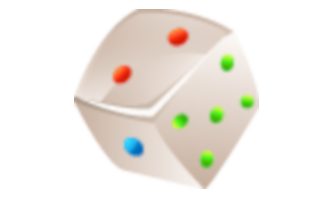Animal Diversity and Adaptations
Science, Grade 5
Animal Diversity and Adaptations
Study Guide

Animal Diversity and Adaptations
Flash Cards

Animal Diversity and Adaptations
Quiz

Animal Diversity and Adaptations
Worksheets

Animal Diversity and Adaptations
Games

Study Guide Animal Diversity and Adaptations Science, Grade 5
❮
1
/
4
❯
ANIMAL DIVERSITY AND ADAPTATION Organ Systems of Vertebrates Animals have organ systems just like you do! Here are some examples of the systems that animals and humans have in common: Integumentary system - Integumentary is just a fancy word for skin! Animals do not have skin quite like humans do. Instead they have tougher skin, feathers, fur, or scales. This outer coat helps protect the animal’s insides and keeps the animal protected from weather and environmental conditions, such as very cold temperatures or very dry air. Muscular system - The muscular system allows animals to move! Animals can control their movement to do the things they need to do to survive – like find food, hide from predators, chew their food, and find shelter. Animals, just like you, have voluntary and involuntary muscles. Endocrine system - The endocrine system of an animal is made up of glands that each serve a different purpose. Each gland in an animal controls different body functions. Nervous system - The nervous system of an animal sends signals from the animal’s brain to the animal’s body….and allows the animal to feel hot and cold as well. Circulatory system - The circulatory system of an animal keeps the blood moving throughout an animal's body. Animals have veins, capillaries, and arteries just like you! Respiratory system - The respiratory system allows animals to take in oxygen (which they need to survive) and breath out carbon dioxide. Digestive system - The digestive system breaks down the food animals eat so that animals can break their food down into energy! Animals need energy to move around and carry out their life processes. Excretory System – This system allows animals to rid their body of waste. © Copyright NewPath Learning. All Rights Reserved. Permission is granted for the purchaser to print copies for non-commercial educational purposes only. Visit us at www.NewPathLearning.com.
Reproductive system – This is an easy to figure out…it enables animals to produce offspring. Immune system - The immune system protects animals against sicknesses, infections, and diseases. Skeletal System - The skeletal system consists of the bones and cartilage that supports an animal’s body parts. Lesson Checkpoint: What is one organ system you have in common with an animal and what is the function of that system? Animals Can Move Animals have the ability to move from place to place in their environments; plants do not have this ability. Some animals can move quite fast in order to escape predators. Animals can move certain body parts in order to protect themselves – such as their strong jaws, sharp claws, and even horns upon their heads. Comparing Animals Characteristics of Vertebrates have backbones bigger than invertebrates move faster than invertebrates Characteristics of Invertebrates do NOT have backbones much smaller than vertebrates move much slower than vertebrates Lesson Checkpoint: What is the difference between a vertebrate and an invertebrate? © Copyright NewPath Learning. All Rights Reserved. Permission is granted for the purchaser to print copies for non-commercial educational purposes only. Visit us at www.NewPathLearning.com.
Animal Adaptations Adaptations are traits that animals have that help them survive in their environments. Adaptations can be physical or behavioral. Examples of a physical trait are the thickness of an animal’s fur in the winter (which helps the animal survive cold winters), the shape of a bird’s beak (which helps them get food and build nests), and even the shape of an animal’s ears (bats have large ears to hear well since they rely on their hearing to fly). Animals depend on their physical features to help them find and eat food, to build shelters, to attract mates, and to protect themselves. Behavior adaptations are activities that animals DO, which help them survive in their environment. Behavior adaptations can be learned from a parent or other animals or they can be inherited (a behavior they are born with). An example of a behavior adaptation is how an opossum plays dead when a predator is near by or how many animals move in large groups – there is safety in numbers! Lesson Checkpoint: What is an adaptation? Animals use their adaptations for many reasons, such as to protect themselves and to find food. Mimicry is an adaptation that allows an animal to look or act like a stronger (scarier) animal. This adaptation makes an animal’s predators think it is poisonous or dangerous when it is really not. Camouflage is another adaptation. It allows animals to blend in with their surroundings. Animals use this adaptation to hide from predators and to sneak up on their prey! Migration is when animals move from one area to another for a certain period of time or season. Animals migrate in order to get to a place where the temperature allows for the animal to survive and find food. Hibernation is also an adaptation! When an animal goes into a deep sleep, it is hibernating. During this time the animal’s body temperature drops significantly. The animal’s breathing and heartbeat slow down. © Copyright NewPath Learning. All Rights Reserved. Permission is granted for the purchaser to print copies for non-commercial educational purposes only. Visit us at www.NewPathLearning.com.
What is THAT animal? It is a tigon, which is a cross-breed between a tiger and a lion. Crossbreeding is when two animals (or plants) of different breeds and species reproduce and create an offspring. Cross-breeding does not happen in wild, it only occurs with human intervention. Hybrids are the animals that are produced as a result of cross- breeding. A mule is a hybrid. It is a cross-breed of a donkey and a horse. Lesson Checkpoint: What is a hybrid? Animal Diversity Millions of different animal species live on the Earth today! Animals range in size from teeny tiny to huge! Some animals are unicellular while others are multicellular. Some animals have backbones while others do not! There are so many animals to study, observe, and discover! See if you can discover an animal you have NEVER heard of before. Do some research at your library or on the Internet! © Copyright NewPath Learning. All Rights Reserved. Permission is granted for the purchaser to print copies for non-commercial educational purposes only. Visit us at www.NewPathLearning.com.
